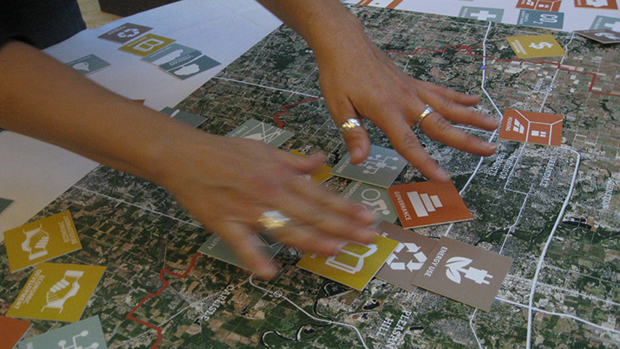Getting Engaged: New Tools for Community Action

 Sasaki
Sasaki

People love where they live. They have an inherent desire to see the places they call home thrive. Too often, however, members of a community are put into a reactive position, asked for their input only when a major project is proposed. Meanwhile, opportunities for proactive civic engagement are few and far between, though some examples are beginning to emerge.
Last month in Waco, Texas, a group of students from fifth to ninth grade came up with several ways they could pitch in to make their community better. From animal rights to poverty to homelessness, they wanted to work together to help Waco meet its challenges.
In South Carolina, recently, residents of the Poe Mill neighborhood in Greenville gathered to paint a mural on a blank façade at the entrance of their community. They say it’s a small part they can easily play in a wide-reaching neighborhood improvement initiative headed by the city.
These communities are not alone in their desire to get engaged. Citizens across the country demonstrate passion and commitment to local progress for city-led improvement projects. In its Soul of the Community report, the Knight Foundation found that “three main qualities attach people to a place: social offerings, openness, and aesthetics.” As such, people are deeply invested in making sure their communities have entertainment venues, physical beauty, and a welcoming atmosphere. Planners and civic leaders would be remiss to leave citizens out of the planning process; as cities undertake improvement projects, a main component in success lies in incorporating the input of vested local citizens, early and often.
At the end of the day, local leaders, planners, and design professionals are also members of their communities. They have kids in school and they go to the park just like everybody else. They shop at the farmer’s market and pay the water bill. They know the importance of keeping their constituents in mind when making decisions.
But they also know they have to go deeper than that: meaningful engagement with the right people will reveal solutions and ideas that otherwise would not come to surface.
In a May 2014 survey, we hoped to find some of those hidden sentiments as a way to better inform our civic projects in the future. The results, released in the State of the City Experience report, reveal some important design insights:
To gain this kind of powerful input on the local level, community leaders and planners use a number of different methods to engage people. In several communities over the past few years, MindMixer and Sasaki have worked together to connect community members with the projects they care about, creating online engagement platforms that allow for proactive input from community members to inform future development. Some of these communities include the following:
MindMixer and Sasaki share an interest in making places the best they can be, with the help of the people who love them. We also share a passion for helping people love those places even more by involving them in the planning and design process from the beginning, giving them ownership of their surroundings, and creating advocates for these vitally important projects.